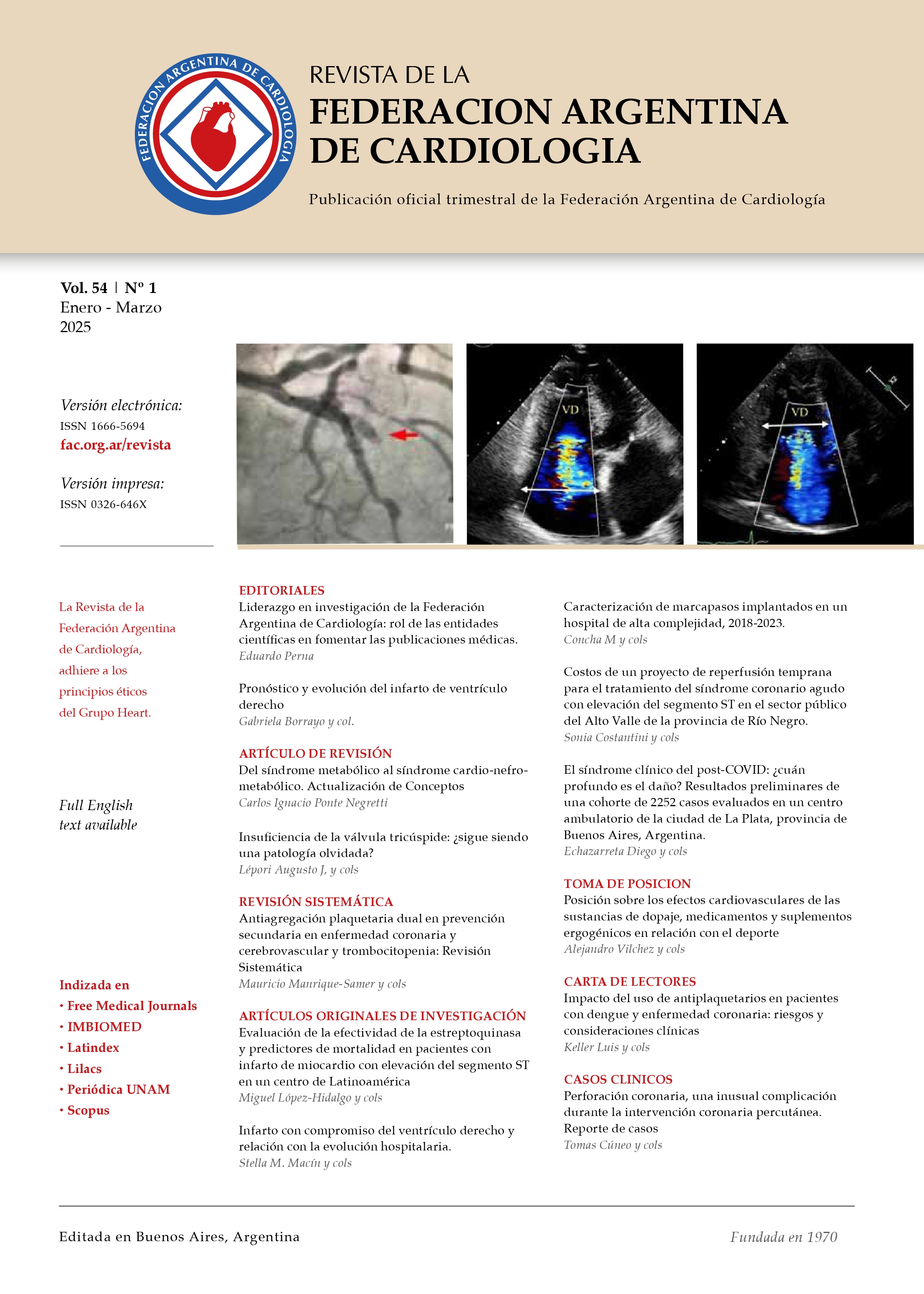Costs of an early reperfusion project for the treatment of ST-segment elevation acute coronary syndrome in the public sector of the Alto Valle, Province of Río Negro
Keywords:
Reperfusion, Angioplasty, Thrombolysis, Cost-Effectiveness, ST-Segment Elevation Acute Coronary Syndrome (STEACS)Abstract
Introduction: in the public sector of the Alto Valle of Rio Negro (RN) a healthcare issue has been identified concerning the management of ST-segment elevation acute coronary syndrome (STEACS). An opportunity to improve this situation would be the implementation of an early reperfusion project. Objective: to estimate the costs of an early reperfusion project with prehospital/hospital thrombolysis and primary PCI (pPCI) in patients with STEACS. Methodology: the study is framed as a health economic evaluation. The cost estimation was conducted using a macro-costing technique with a cost-of-illness approach. Results: the total estimated cost of the project was US$ 2,422,783.91. According to the expected cases and based on the projections made, in the first year of the project, we would expect to treat 66 STEMI patients, with a program cost of US$10,791.19/patient, a cost of stay of US$1,640.01/day, and an average stay of 6.58 days. By the end of the program, we would aim to treat 131 patients at a cost of US$ 2,066.93/patient and a cost per day of stay of US$ 645.92, with an average stay of 3 days. Conclusions: In the public healthcare sector of the Alto Valle of RN, reperfusion times for STEMI are prolonged, highlighting the need for the implementation of an early reperfusion project. For patients undergoing pPCI, initial costs are high, but they are offset by a shorter hospital stay. In the case of treatment with thrombolysis, costs are higher due to the need for coronary angiography with a probable PCI.



